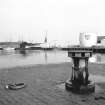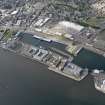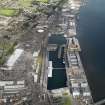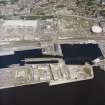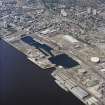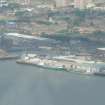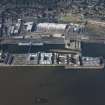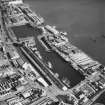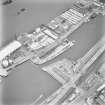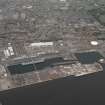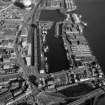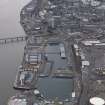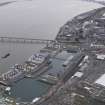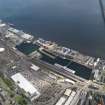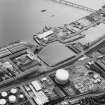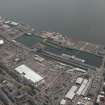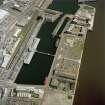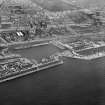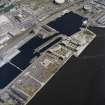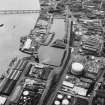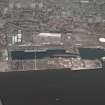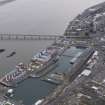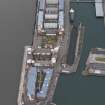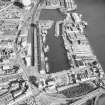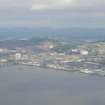Scheduled Maintenance
Please be advised that this website will undergo scheduled maintenance on the following dates: •
Tuesday 3rd December 11:00-15:00
During these times, some services may be temporarily unavailable. We apologise for any inconvenience this may cause.
Dundee, East Camperdown Street, Camperdown Dock
Dock (Period Unassigned)
Site Name Dundee, East Camperdown Street, Camperdown Dock
Classification Dock (Period Unassigned)
Alternative Name(s) Dundee Harbour; Port Of Dundee; River Tay; Firth Of Tay; H.m. Submarine Base, Hms Ambrose
Canmore ID 33554
Site Number NO43SW 90
NGR NO 41322 30540
NGR Description Centred NO 41322 30540
Datum OSGB36 - NGR
Permalink http://canmore.org.uk/site/33554
- Council Dundee, City Of
- Parish Dundee (Dundee, City Of)
- Former Region Tayside
- Former District City Of Dundee
- Former County Angus
NO43SW 90.00 centred 41322 30540
NO43SW 90.01 NO 41374 30409 and NO 41453 30460 Beacons
For adjoining (to SW) Victoria Dock (centred NO 40958 30366), see NO43SW 89.00.
Camperdown Dock [NAT] (centred NO 4132 3054)
OS 1:10,000 map, 1984.
Desk Based Assessment (2001)
The site is part of the important Dundee Harbour area; an outstanding example of a Victorian industrial and harbour complex, containing 11 listed buildings… None of the listed buildings lie within the proposed City Quay development and the existing buildings on the site are recent and of little importance… The Camperdown, Victoria and East Graving Docks are considered of outstanding importance, while the dock gates of Camperdown Dock, and the quay at Queen Elizabeth Wharf are considered important, although the wooden extension to the latter is considered neutral… No dockside furniture of importance is noted…
Nevertheless, the various alterations to the river frontage quaysides (the original dockside frontage of 1859, the Low Water Jetty of 1884, and the Camperdown West Wharf of 1893) could lie behind the existing Queen Elizabeth Wharf, as could the original south-west corner of Camperdown Dock. The sites of the five former slipways and the foundations of the Victorian warehouses (Sheds L, M, P, Q), of the crane at the original south-west corner of Camperdown Dock, and of the two sites of the harbour lights at the entrance to the dock may also lie under the present ground surface. Original setts of the dockside surface survive in places and the course of the railway lines may be apparent in them.
A desk-based assessment was conducted for this area, and the site was visited by representatives of SUAT Ltd on 17th January 2001. This rapid walk-over survey allowed SUAT Ltd to ascertain what features of importance were visible on the surface. Whilst it is true to say this area of the docks has suffered very badly from previous development and clearance works, a few important features were still visible. These included several small expanses of cobbled setts. Their distribution suggested that they were surviving in-between areas occupied by roads and old building footings. Around the Pump House, not affected by this phase of development, lay a well-preserved area of cobbled track, which provided an example of the original nature of these surfaces. Some rail lines were still visible adjacent to the area marked as 'compound'… The remains of two slipways could be seen in the quay wall where they would originally have exited into the Tay. These had been filled in.
Information from unpublished SUAT Reports, 2001
City Quay, Dundee: Archaeological Survey.
Desk-Based Assessment of a Development at City Quay, Dundee.
Publication Account (2013)
CAMPERDOWN DOCK: Completed in 1857-1865 by Charles Ower, Camperdown Dock is almost square in plan. One set, oldest and broadest, of its transit sheds survives at the west side. The East side held Camperdown Shipyard, Gourlay Brothers, 1869-1908, who from 1854-70 had constructed iron ships at Marine Parade. The large drum is a storm chamber (2002). The Dock and its modern gates (the old ones put aside) also gives acces to Victoria Dock and swing bridges span its entrance. A vehicular bridge was at quayside level and the pedestrian bridge is a graceful two-leaf arch turned by hand, bearing the arms of the port of Dundee, 1877. This was repaired as a planning condition of the retail development.
M Watson, 2013



































































